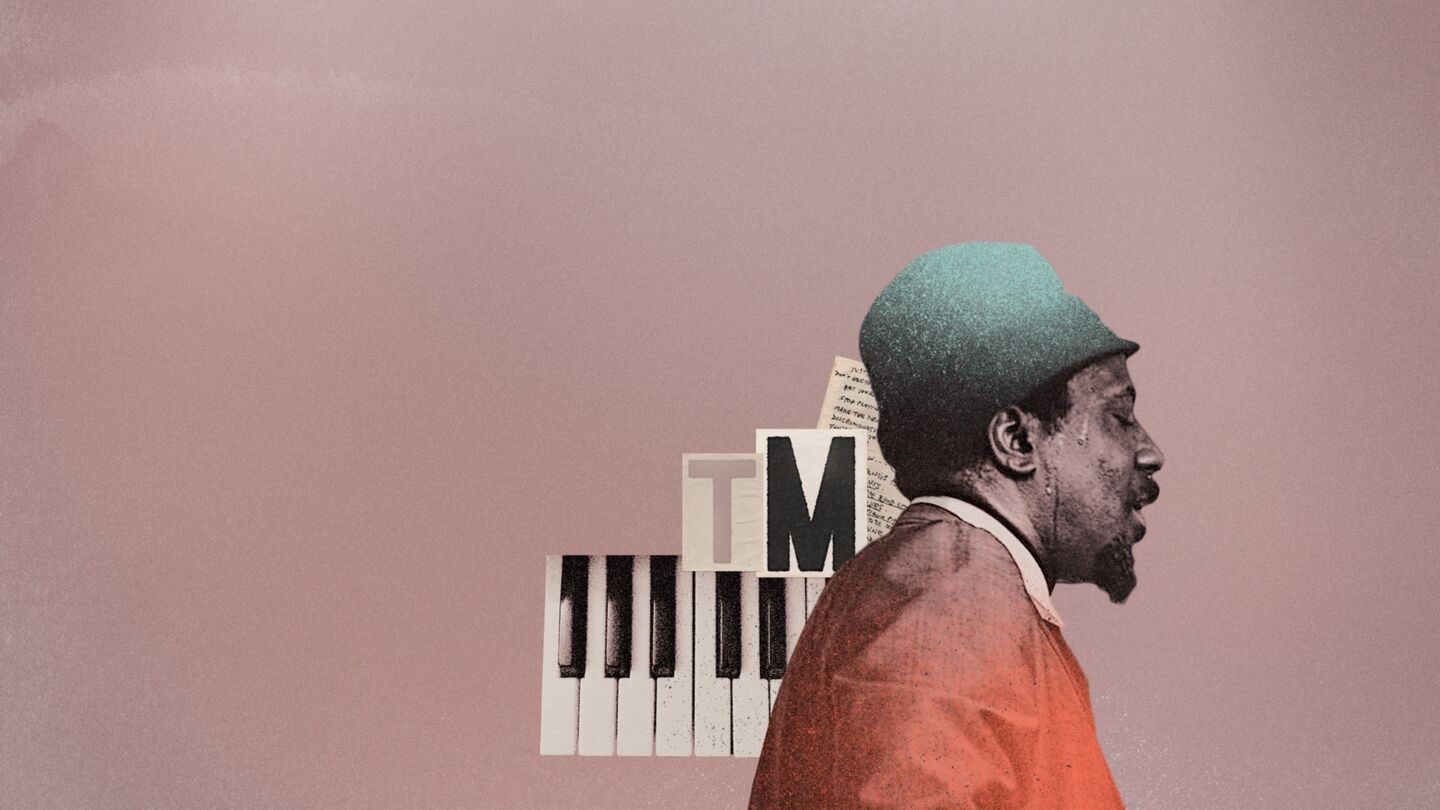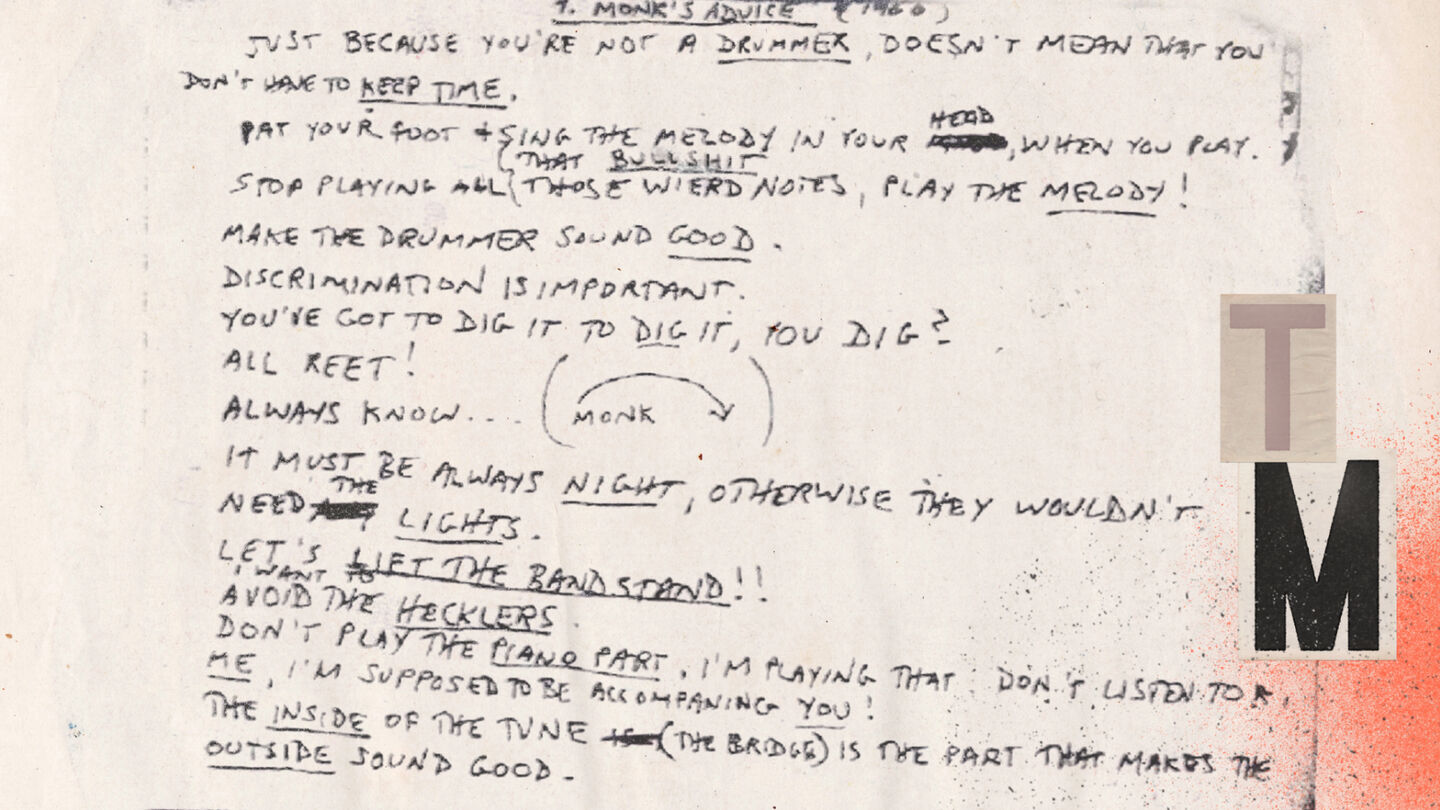Ideas
The indomitable creative spirit

Ideas

Guts. Patience. Sometimes even outright oddity. Thelonious Monk will forever be remembered as a true originator in the history of jazz. Not just for his unconventional approach to rhythm and tonality, but for his fierce dedication to his art instead of the climb to fame. Throughout his life, he channeled his soul through the keys of the piano in a musical language that no one else could speak. But today, his spirit lives on through an impressive volume of jazz standards and a new generation of creatives with the same devotion to an authentic form of expression.

Thelonious Monk was a musician’s musician. At 13 years old, he was shut out of Apollo Theater for winning too many competitions. After learning the rules, he spent the rest of his life artfully breaking them. He played at a slower tempo with surprising rhythms and melodies in a time when crowds craved fast tunes. Though his masterful composition earned him the respect of his peers, it made him less accessible to wider audiences.
Despite public criticism and the rising stardom of his contemporaries, he persisted. Never diluting his style and perhaps even aloof to the expectations of others. This stalwart commitment to his own unique voice is a thread that runs across disciplines, tying many creative icons together. The innovation he brought was driven by his fearlessness to do and see things differently and his artistic honesty to craft a story that reached for the heart instead of the wallet.

“But if you mean a note enough, it will sound different. You got to pick the notes you really mean.”
His sincerity and loyalty to his values permeated through all aspects of his life. Monk served time in Riker’s Island jail and had his license to play at clubs suspended over drugs that didn’t belong to him, but he took the punishment rather than testifying against fellow musician and good friend, Bud Powell. Left without an audience in what could have been his prime, Monk still sustained his hustle in outer boroughs and black-owned clubs to scrape by. He had a passion for the music that couldn’t be subdued by hardship or society. During performances, he would often get up to dance wildly, seemingly possessed by the music.
It took nearly two decades of playing, collaborating and composing before Thelonious Monk found commercial success with the release of “Brilliant Corners” in 1957. In the years after its release, he was signed to Columbia Records and was featured on the cover of Time magazine. Long after his death, he was awarded a Grammy Lifetime Achievement Award and a Special Pulitzer Prize. Against all odds, and without chasing the glory, his one-of-a-kind sound changed a genre forever.
“You’ve got to dig it to dig it, you dig?”
Our shelves are full of books packed with secrets and shortcuts for the creative process. We subscribe to industry magazines and attend speaking engagements looking for a spark to help us find success. Maybe even fame. Our industry values innovation and originality, and we’re continuingly pushing ourselves to find a new angle or to do something that has never been done. But what we need is the courage to actually take that chance. To go the way of Thelonious Monk and write our own rules. To trust our instincts and forge our own path. Even if it takes a while for others to catch up. “A note can be as small as a pin or as big as the world,” Monk said, “it depends on your imagination.”
Spencer Strickland